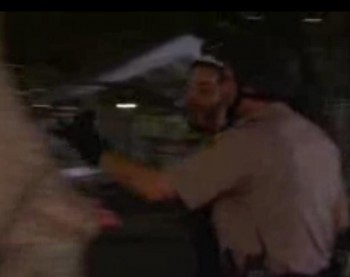A Tale of Two Occupy Movements: Oakland and Miami

Last night, Occupy Miami was rousted from their encampment, with a few arrested (including photographer Carlos Miller). They have negligible local support, and are remote enough from the rest of the Occupy movement that they’re pretty much on their own. (Good news: the camp-clearing was “carried out almost completely without violence,” except for when they clubbed a dude.) The small organization will have to regroup without an encampment; it’s a hard movement to sustain in isolation, though they say they’ll try. (Hint: what a prime American location for an Occupy movement to move homeless people into foreclosed houses!) That’s the opposite of Oakland, where Saturday’s large demonstration resulted in a crazy mass police reaction, the arrest of 400, and also the continued creation of a criminal class of people who have previously been arrested on trumped-up charges and who now aren’t allowed to go near downtown Oakland without facing six months in prison. (How American!) Of the 409 arrested, only 12 are being charged. (The intention with the arrests being to hold protesters in jail long enough to scare them off protesting.) Despite such tough police and government opposition in Oakland, it’s quite likely that protesters will win soon enough — at the very least, in their intent to turn an abandoned convention center into a community service facility.
In videos from Saturday in Oakland, you can see pretty amazing police tactics on display. Unlike in the South, where clubbing hippies is socially acceptable, even encouraged, clubbing handcuffed people on the ground does not fly among residents of the Bay Area.
In an unusual turn, in video from mid-January, Occupy Miami praised the police department “for acting professionally and respecting our first amendment rights.” It’s not necessary for local police departments and protesters to be fighting in the streets, unless the police (and, in Oakland’s case, the mayor) make it so.
